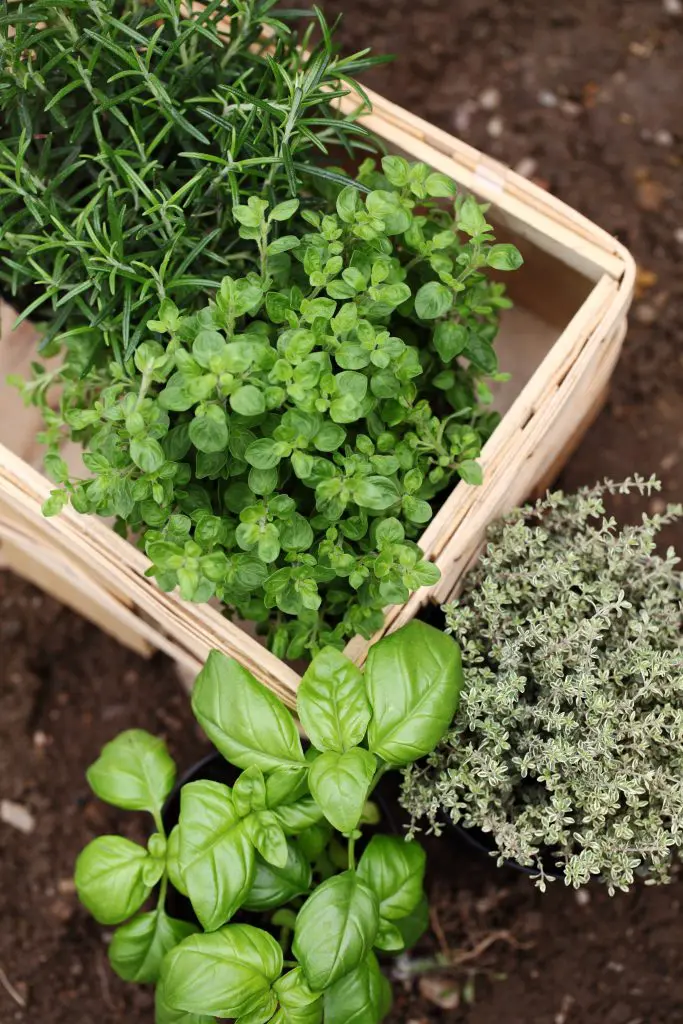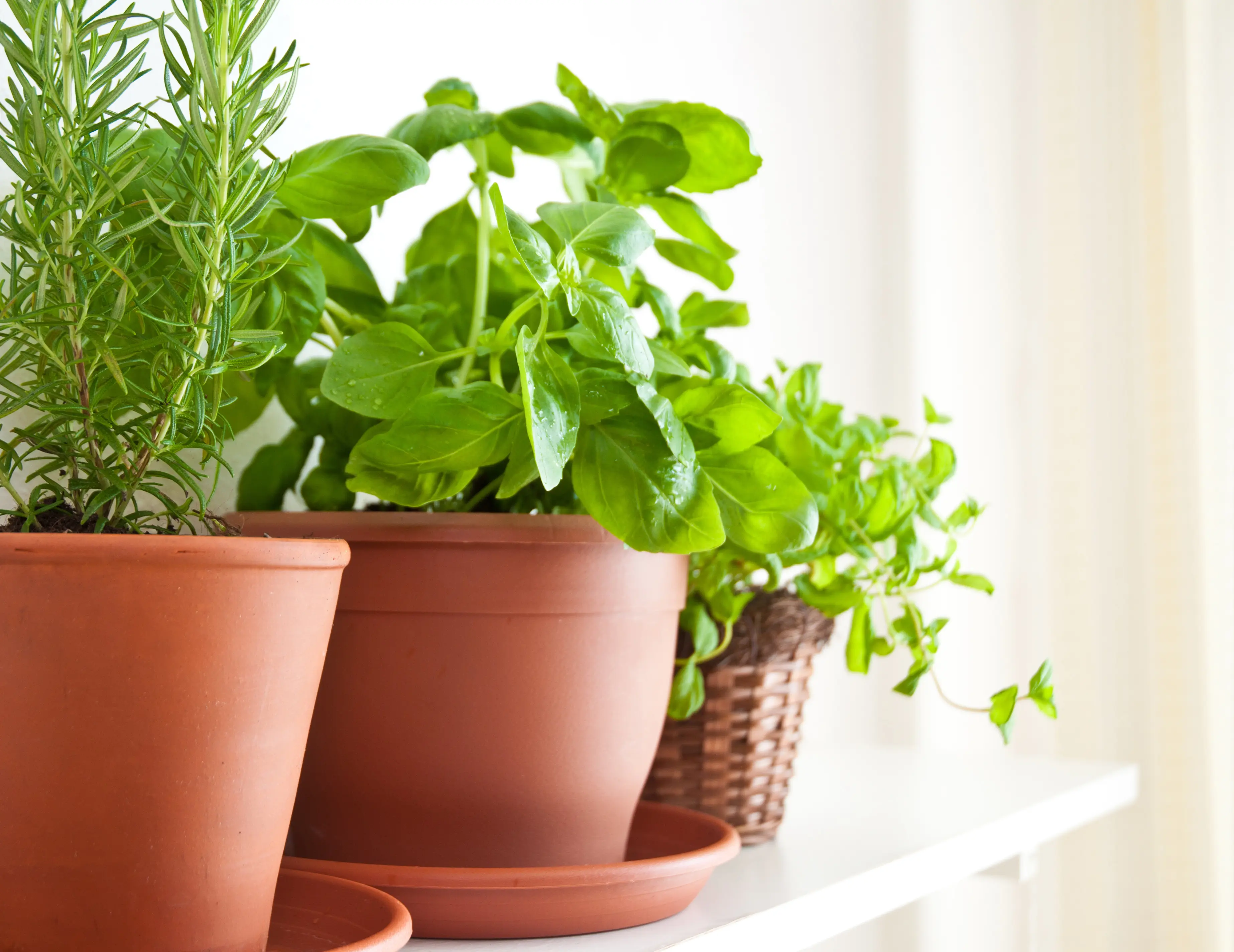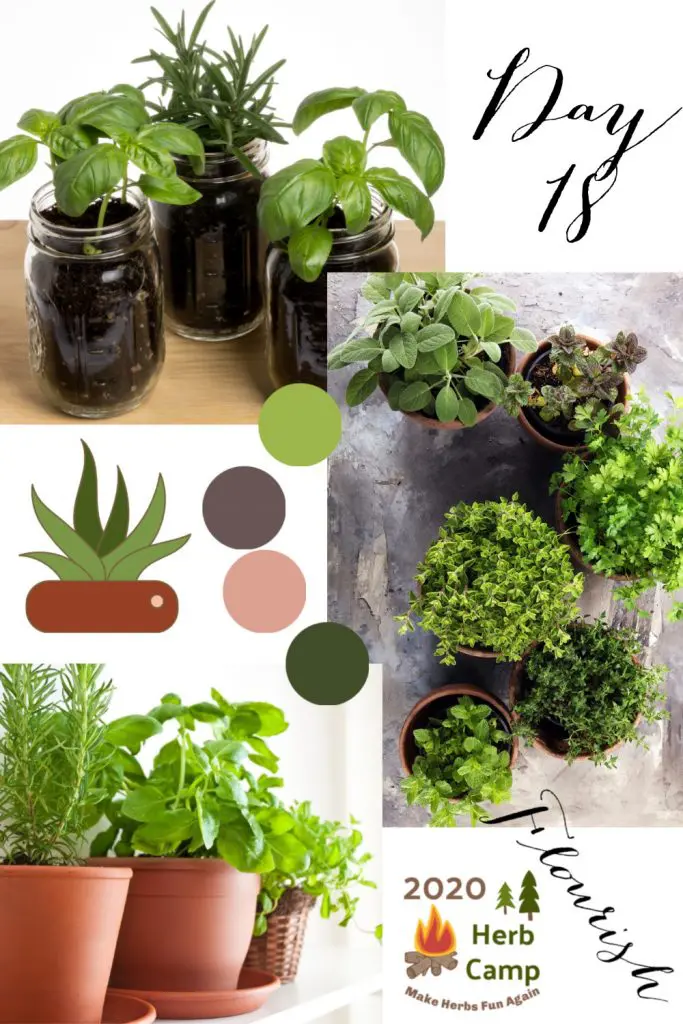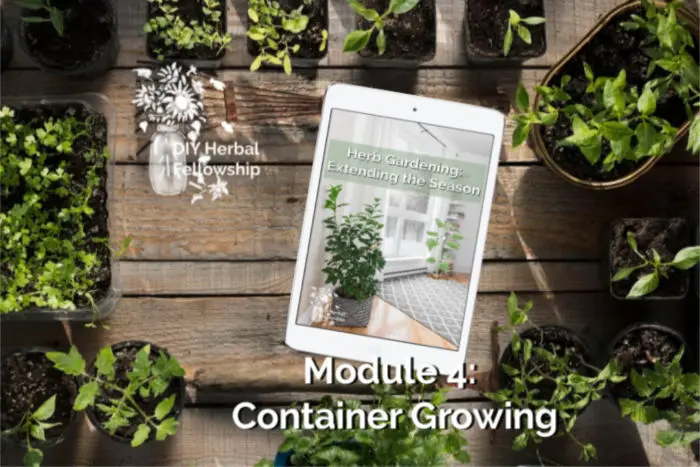WELCOME TO HERB CAMP 2020! In this third of three weeks of herb camp, the theme is “Herbal Creativity” Today you get to roll up your sleeves for another camp craft. This time we are going to plant an herb pot.
If you have an outdoor garden area you may not see the benefit of growing herbs in containers, however, container grown herbs help keep herbs close to where you use them. For instance I have a potted aloe vera plant on my kitchen window sill. I’ve needed it several times when I’ve burned a finger or palm in the kitchen. Having it right there within a few feet of my stove, allows me to get to it quickly when I need it.
Last winter I potted up some garlic chive plants from the garden just after the first frost. I used them all winter long in egg dishes, salads, and on potatoes to give us that fresh chive flavor throughout the winter. While the pot wasn’t huge we did get one cutting a week from this chive pot. Chives don’t require a lot of light, so I kept it on the window sill and didn’t need to add supplemental lighting, even in December.
Kitchen herbs that require a longer growing season like rosemary or thyme are also good candidates for container growing in a small kitchen garden. Starting them in pots instead of transplanting them into pots at the end of the season can spare them the stress of transplanting, making it more likely they will survive the winter.
What you need to start an herb pot
- Herb seeds, herb cuttings, or garden herbs to divide
- Garden soil
- Worm castings or finished compost
- Pot with a drainage hole
- Saucer for pot

Rosemary, oregano, thyme and basil.
Tips for container growing
- Don’t over crowd the pot. For a small pot, 1 plant is enough, for a larger planter allow some space between plants for the herbs to expand. You can control the size by trimming the plant frequently.
- Ensure all pots have good drainage. Drainage can be improved by adding rocks or marbles into the bottom of a container to prevent roots from sitting in water.
- I like to add a cup of worm castings to the garden soil, when I’m potting up a new planter. This adds a slow release organic fertilizer and organic matter to the soil. If you don’t have worm castings, finished compost can be added instead. Avoid fish meal and fish fertilizers with herb planters intended to be housed in your kitchen. While these are a good source of organic nitrogen, they can smell pretty high and shouldn’t be used on indoor plants. Deodorized fish fertilizer is an option, if you can find it.
- Potting soil blends are not the ideal medium for growing herbs in the kitchen. Peat and vermiculite are nutrient poor and slightly acidic. While this is an ideal environment for seed starting, it isn’t meant for long term plant growth. This can create poor growth in a potted herb unless the soil is heavily amended with both organic matter and nutrients.
- Keep the herbs in the pot trimmed, according to species, in order to encourage new growth.
- Don’t over water. Water only when the soil surface is dry to the touch, but don’t let the pot dry out completely.
Good kitchen herbs for container growing
- Chives and garlic chives
- Sage
- Rosemary
- Thyme
- Multiplier onions
- Greek oregano
- Parsley
- Lemon balm
- Basil
- Holy basil
- Aloe vera (for kitchen first aid)

Rosemary, Basil and Mint
Keep herbs that like water (basil, lemon balm, parsley, chives) together and those that prefer drier soils together (rosemary, thyme, sage, oregano). Choose plants that are about the same height when planning your container herb garden. It’s fine to put more than one herb in a pot with other herbs, but their needs should be similar. Feed your herb pot once a week with seaweed fertilizer or comfrey tea. Left over herb tea is a great addition for in-between watering.
How to harvest
Wait till the plant is at least 8 inches tall before taking the first cutting. Cut the plant just above a leaf junction to encourage more leaf growth. When harvested this way several cutting can be made in a season.
After harvest, encourage fresh growth by watering with a water soluble organic fertilizer.
For more help
Check out module 4 of the Herb Gardening Extending the Season Masterclass
Your challenge
Make a fresh herb planter or herb pot for your kitchen herbs. Find a spot for it in a sunny location. Plant it with your favorite herb(s), whether by seed or by transplanting. Admire it. Share a photo in the Facebook group here or in a picture share site (share the link in the comments).
Note: Click the small arrow on the LEFT to go to the previous day’s Herb Camp Challenge. Click the small arrow on the RIGHT to go to the next day’s Herb Camp Challenge.


I keep an aloe plant in my kitchen but am going to add some chives ( I like your idea!) and coriander which we can’t have enough of!
Fun project. I have some garlic chives seeds I need to plant.. maybe I’ll plant some in a pot… I do have some sage, lemon thyme and oregano, rosemary and lavender as well as peppermint and lemon balm growing out side.. Just planted some Russian sage near the bee hives.. hoping they’ll take off.. Had ordered some live plants but all I got in the mail was some dried up sticks.